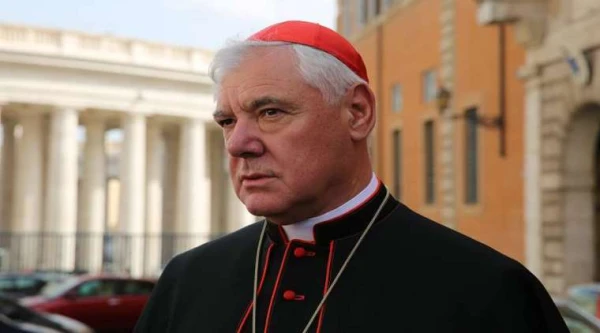
Vatican City, Apr 26, 2023 / 05:15 am (CNA).
It is no accident that the patron saint of foreign missionaries is a cloistered nun, Pope Francis said Wednesday.
Speaking in St. Peter’s Square on April 26, the pope pointed to the example of St. Thérèse of Lisieux, the patron saint of missionaries, and other cloistered religious who sustain the life of the Church through intercessory prayer.
“Truly, the monastics are the beating heart of the proclamation [of the Gospel]. Their prayer is oxygen for all the members of the Body of Christ, their prayer is the invisible force that sustains the mission,” Pope Francis at his general audience.
The pope said that the witness of “nuns and monks, sisters and brothers who renounce themselves and the world to imitate Jesus on the path of poverty, chastity, obedience and to intercede on behalf of all” is a great testimony that runs through history.
He pointed to how St. Thérèse described her vocation in her autobiography, “Story of a Soul”: “I understood that the Church had a Heart and that this Heart was burning with love. I understood it was Love alone that made the Church’s members act, that if Love ever became extinct, apostles would not preach the Gospel and martyrs would not shed their blood.”
“I understood that love comprised all vocations. … Then, in the excess of my delirious joy, I cried out: ‘O Jesus, my Love …. my vocation, at last I have found it…. my vocation is love! … In the heart of the Church, my Mother, I shall be Love.’”
Pope Francis added that this love can be seen in the lives of contemplative monks and nuns who work and pray in silence for the whole Church.
The pope also highlighted the example of St. Gregory of Narek—a 10th-century Armenian priest, monk, mystic, and poet—whom Francis proclaimed a Doctor of the Church in 2015.
“Saint Gregory spent almost his entire life in the monastery of Narek. There he learned to peer into the depths of the human soul and, by fusing poetry and prayer together, marked the pinnacle of both Armenian literature and spirituality,” he said.
“What is most striking about him is the universal solidarity of which he is an interpreter. He shares the fate of all men and dedicates his life to interceding for them. He writes: ‘I carry in me the whole of the earth, and yet I am the deputy of the whole world to offer its prayers”. He calls himself ‘the prayer-offerer of the whole world’” (Book of Lamentations, 28).
Pope Francis underlined that monastics are great evangelizers “because by word, example, intercession, and daily work, monastics are a bridge of intercession for all people and for sins.”
“They also cry for the sins of the world, and they pray and intercede with their hands and hearts uplifted,” he added.
At the end of the audience, Pope Francis greeted several religious orders present in St. Peter’s Square, including the Oblate Hospitaller Franciscan Sisters and the Salesian Sisters of the Sacred Heart.
The pope also noted that Poland will mark the Day of the Martyrdom of the Polish Clergy during World War II on April 29.
“I hope that the testimony of the Polish martyrs will inspire priests, consecrated persons, and the lay faithful, especially the young, to courage and generosity in the service of God and their brothers and sisters. I bless you from the bottom of my heart,” he said.
If you value the news and views Catholic World Report provides, please consider donating to support our efforts. Your contribution will help us continue to make CWR available to all readers worldwide for free, without a subscription. Thank you for your generosity!
Click here for more information on donating to CWR. Click here to sign up for our newsletter.





Though hidden behind thick walls, monks and nuns are known to storm heaven with their relentless prayers, fasting, and sacrifices. May each one of them be blessed with health and stamina to carry on with their cherished ministries.
Throw the dogs a bone and sell the real estate.
Given “Cor Orans” the beating heart looks as a target for organ harvesting.
St Therese is quoted also in the Catechism, at 826.
We can consider the mystical body in another way. The Body is the Temple of the Holy Spirit, the Head is Jesus Christ and the Heart is our Father.
The Church itself, would be the BVM.
The quote in the Catechism is more extensive than the one provided above here; and the italics provided in the Catechism would are hers.
‘ If the Church was a body composed of different members, it couldn’t lack the noblest of all; it must have a Heart, and a Heart burning with LOVE. And I realized that this Love alone was the true motive force which enables the other members of the Church to act; if it ceased to function the Apostles would forget to preach the Gospel, the Martyrs would refuse to shed their blood. LOVE IN FACT IS THE VOCATION WHICH INCLUDES ALL OTHERS; IT’S A UNIVERSE OF ITS OWN, COMPRISING ALL TIME AND SPACE – IT’S ETERNAL. ‘
This is how I was inspired with it during the Eucharistic Congress of 1996. It’s not that I had forgotten.